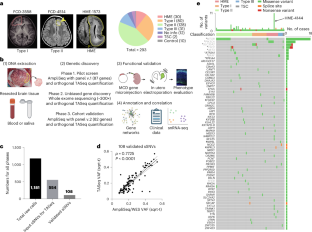- データは研究者がPTSDなどの症状をよりよく理解し、治療するのに役立つ可能性があります。 Data could help researchers better understand and treat conditions like PTSD
データは研究者がPTSDなどの症状をよりよく理解し、治療するのに役立つ可能性があります。 Data could help researchers better understand and treat conditions like PTSD
2023-01-12 ミネソタ大学
この研究の共同著者であり、ミネソタ大学電気コンピューター工学科の准教授であるHye Yoon Park氏は、「これまで研究者は、マウスを犠牲にして初めてこれらのシナプスを検出することができましたが、そのため、これらのシナプスを長期にわたって追跡することが困難でした。しかし今回、生きたマウスの脳内のシナプスを数日間にわたって画像化することが可能になったため、シナプスが長期的にどうなるかをよりよく理解できるようになりました。生きたマウスの脳でこれが行われたのは初めてです」。
ミネソタ大学の研究チームは、韓国のソウル大学の研究者と共同で、脳内のシナプスを検出する「eGRASP」という技術を開発した。研究チームは、朴教授のイメージング技術と組み合わせて、恐怖体験を記憶しているときと「記憶の消滅」(恐怖記憶の抑制)を経験しているときの、生きたマウスの脳内のシナプスの動態を観察することに成功した。
「神経科学の分野では、これに関して2つの異なる仮説があります」とParkは説明します。記憶の消滅が起こるとき、恐怖条件付けの間に発達したシナプスが消滅するかもしれないと考える人がいて、これは事前に獲得した記憶の「非学習化」とも呼ばれていました。他の人々は、それらはまだそこにあるが、おそらく別のシナプスのセットが形成されて、マウスが今再び環境が安全であることを学習したことを示すと考えたのですが、これは条件付けに関する「新しい学習」と呼ばれています。
研究者達のデータは、unlearning仮説を支持するものでした。恐怖体験中に形成された新しいシナプスの一部が、記憶の消滅過程の過程で消失していることがわかったのです。この研究成果は、心的外傷後ストレス障害(PTSD)などの患者の脳活動をよりよく理解するのに役立つと考えられる。
<関連情報>
- https://cse.umn.edu/college/news/new-research-shows-dynamics-memory-encoding-synapses-brains-live-mice
- https://www.cell.com/current-biology/fulltext/S0960-9822(22)01975-3
- https://www.pnas.org/doi/10.1073/pnas.2117076119
恐怖記憶の海馬エングラムネットワークは、in vivoで新しいシナプスを採用し、既存のシナプスを修正する。 Hippocampal engram networks for fear memory recruit new synapses and modify pre-existing synapses in vivo
Chaery Lee,Byung Hun Lee,Hyunsu Jung,Chiwoo Lee,Yongmin Sung,Hyopil Kim,Jooyoung Kim,Jae Youn Shim,Ji-il Kim,Dong Il Choi,Hye Yoon Park,Bong-Kiun Kaang
Current Biology Published:January 12, 2023
DOI:https://doi.org/10.1016/j.cub.2022.12.038

Highlights
•Hippocampal synaptic connections are tracked by two-photon imaging of dual-eGRASP
•E-E synapses undergo synaptogenesis according to fear conditioning
•Extinction learning significantly correlated with the disappearance of E-E synapses
•Spatial distribution of new E-E synapses induces clustering of engram synapses
Summary
As basic units of neural networks, ensembles of synapses underlie cognitive functions such as learning and memory. These synaptic engrams show elevated synaptic density among engram cells following contextual fear memory formation. Subsequent analysis of the CA3-CA1 engram synapse revealed larger spine sizes, as the synaptic connectivity correlated with the memory strength. Here, we elucidate the synapse dynamics between CA3 and CA1 by tracking identical synapses at multiple time points by adapting two-photon microscopy and dual-eGRASP technique in vivo. After memory formation, synaptic connections between engram populations are enhanced in conjunction with synaptogenesis within the hippocampal network. However, extinction learning specifically correlated with the disappearance of CA3 engram to CA1 engram (E-E) synapses. We observed “newly formed” synapses near pre-existing synapses, which clustered CA3-CA1 engram synapses after fear memory formation. Overall, we conclude that dynamics at CA3 to CA1 E-E synapses are key sites for modification during fear memory states.
生きたマウスを用いた記憶形成時のmRNA合成のリアルタイム可視化 Real-time visualization of mRNA synthesis during memory formation in live mice
Byung Hun Lee, Jae Youn Shim, Hyungseok C. Moon, Dong Wook Kim, Jiwon Kim, Jang Soo Yook, Jinhyun Kim and Hye Yoon Park
Proceedings of the National Academy of Sciences Published:July 1, 2022
DOI:https://doi.org/10.1073/pnas.2117076119

Significance
Arc is one of the genes that are rapidly transcribed by neuronal activity and thus used as a marker for memory trace or engram cells. However, the dynamics of engram cell populations is not well-known because of the difficulty in monitoring the rapid and transient gene expression in live animals. Using a mouse model in which endogenous Arc messenger RNA (mRNA) is fluorescently labeled, we demonstrate that Arc-expressing neuronal populations have distinct dynamics in different brain regions and that only a small subpopulation that consistently expresses Arc during both memory encoding and retrieval exhibits context-specific calcium activity. This live-animal RNA-imaging technique will offer a powerful tool for connecting gene expression to neuronal activity patterns and to behavior.
Abstract
Memories are thought to be encoded in populations of neurons called memory trace or engram cells. However, little is known about the dynamics of these cells because of the difficulty in real-time monitoring of them over long periods of time in vivo. To overcome this limitation, we present a genetically encoded RNA indicator (GERI) mouse for intravital chronic imaging of endogenous Arc messenger RNA (mRNA)—a popular marker for memory trace cells. We used our GERI to identify Arc-positive neurons in real time without the delay associated with reporter protein expression in conventional approaches. We found that the Arc-positive neuronal populations rapidly turned over within 2 d in the hippocampal CA1 region, whereas ∼4% of neurons in the retrosplenial cortex consistently expressed Arc following contextual fear conditioning and repeated memory retrievals. Dual imaging of GERI and a calcium indicator in CA1 of mice navigating a virtual reality environment revealed that only the population of neurons expressing Arc during both encoding and retrieval exhibited relatively high calcium activity in a context-specific manner. This in vivo RNA-imaging approach opens the possibility of unraveling the dynamics of the neuronal population underlying various learning and memory processes.


